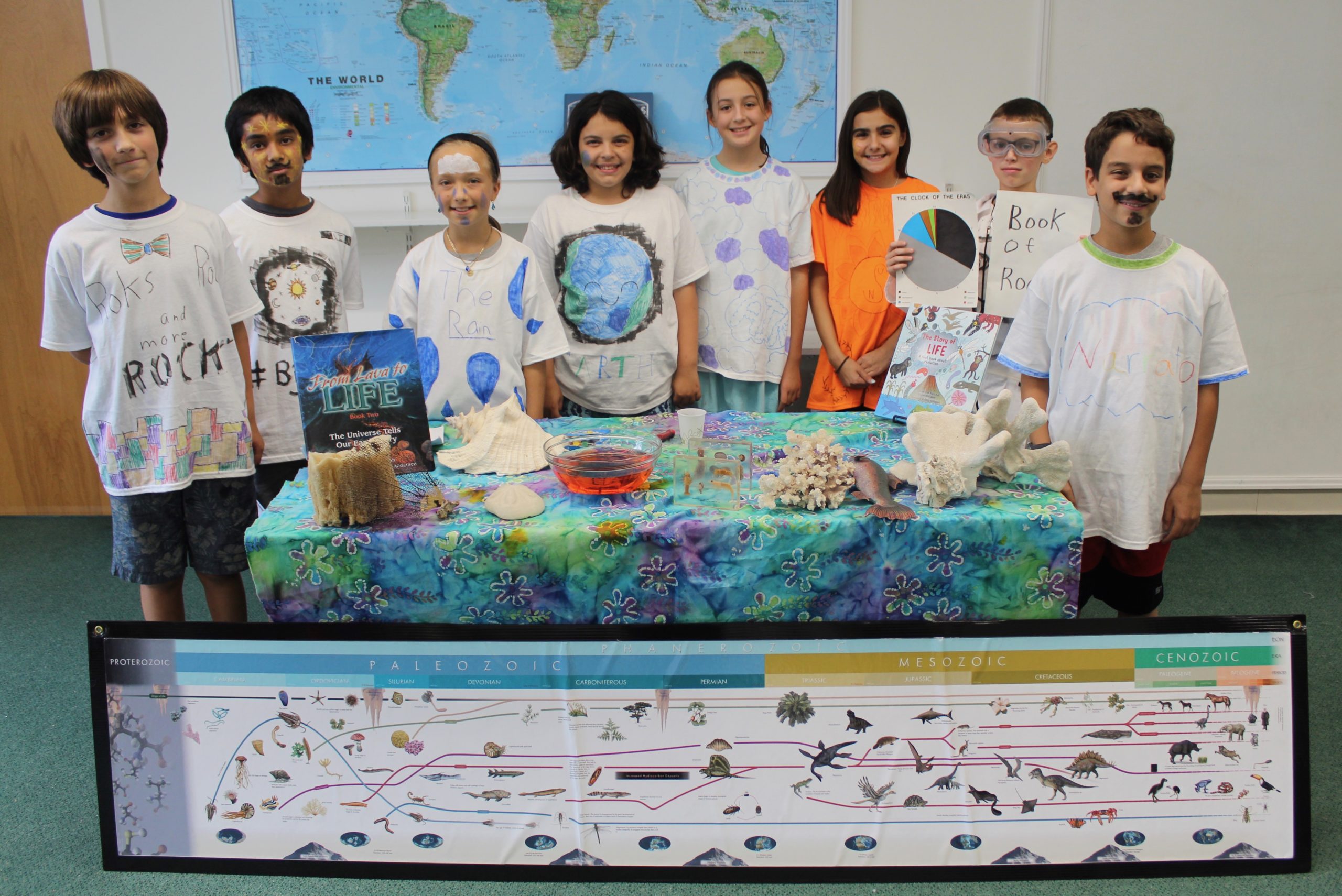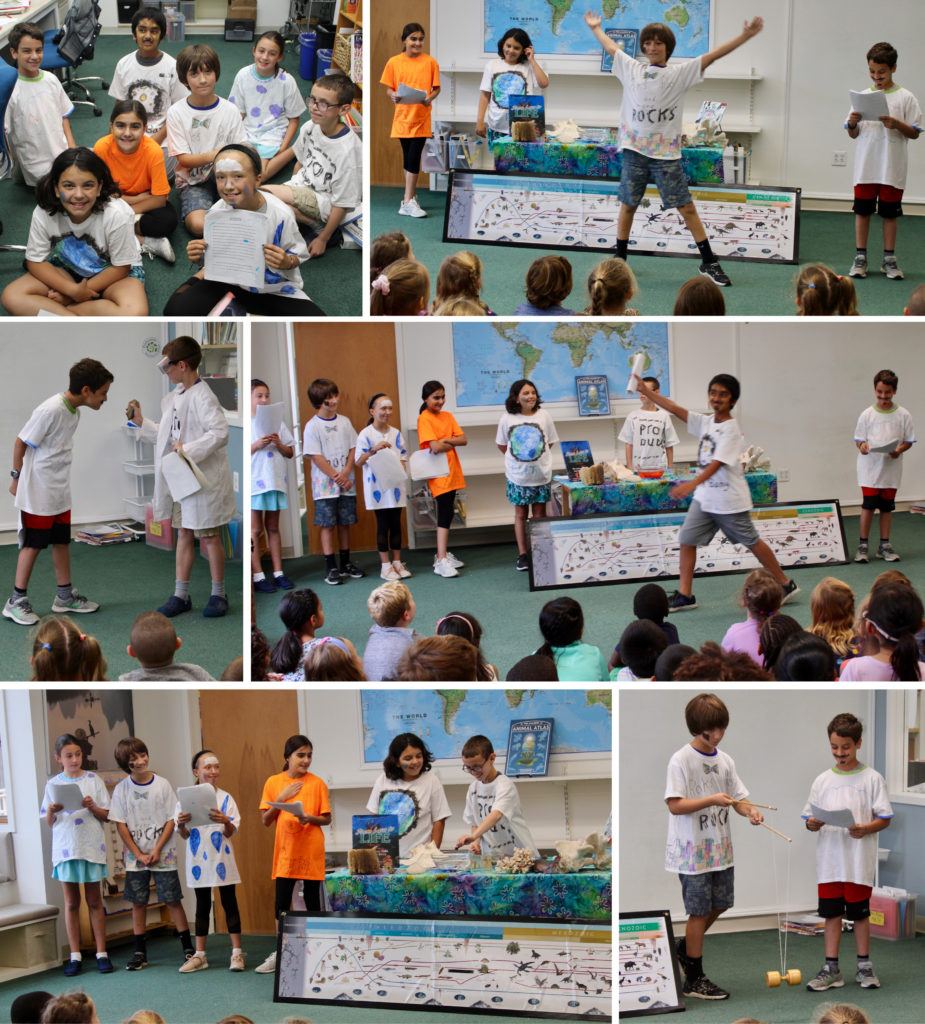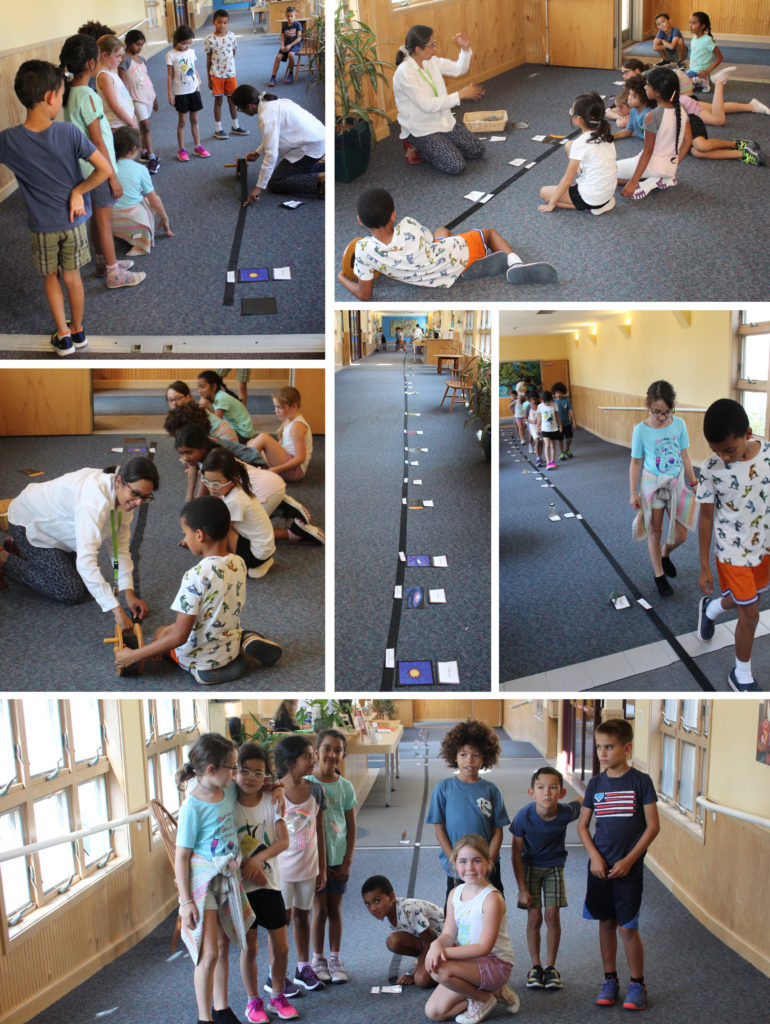
The Great Lessons are Montessori’s unique approach to organizing the elementary curriculum into five big themes. These themes introduce the key events in the history of our Universe. These lessons are called the “Great Lessons” because they are special, dramatic introductions to key curriculum themes and are shared with the students during the first few weeks of schools. They launch all later study in astronomy, physics, chemistry, geology, geography, biology, archaeology, history, and peace education. Their purpose is to spark a sense of awe and wonder about the universe and propel students’ curiosity forward toward their individual and group work in the key curriculum areas. They also are impressionistic as they stay with children long after they are given. They are the amazing stories of our universe, our human story, and the miracle of life. The Great Lessons consist of the following presentations and connected curriculum work from those lessons: The Beginning of the Universe and Earth, The Coming of Life, The Coming of Human Beings, How Written Language Began, How Numbers Began.
–
The oldest students in the Upper Elementary classroom continued the tradition of taking what they have learned from the Great Lessons and interpreting it in a dramatic story. Third Level Upper Elementary students created a play based on what they learned and presented it to their younger elementary peers. Throughout their elementary years students will study The Formation of the Universe, The Coming of Life, The Coming of Human Beings, The Story of Numbers, and The Story of Language.

Timeline of Life
A follow-up lesson from the first and second great lessons was given to the Level 1 students. They gathered in the Main Foyer to create a visual timeline starting with the Big Bang which occurred 13.8 billion years ago to the appearance of Early Humans about 3 million years ago. This lends a wonderful opportunity for the children to witness the events that took place on Earth before humans inhabited the planet.
